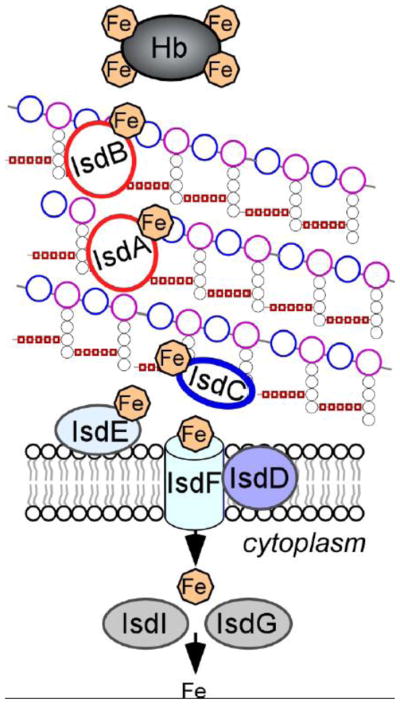FIG. 2.

Isd-mediated heme-iron uptake across the cell wall of S. aureus. IsdA, IsdB, and IsdH are anchored to the cell wall by sortase A and function as receptors for hemoprotein ligands, such as hemoglobin (Hb). Upon binding to Isd receptors, heme is released from the hemoproteins and passaged through the cell wall in an IsdC-dependent manner. IsdC carries the NPQTN motif and is the substrate of Sortase B. When S. aureus are incubated with proteinase K, IsdB is completely degraded, IsdA is partially degraded but IsdC remains intact, suggesting that the three proteins are displayed at varying distances from the surface of the envelope. The heme molecule is taken up by the membrane transport system composed of IsdDEF and upon entry into the cytoplasm, is degraded by the heme oxygenases IsdG and IsdI to the release free iron (adapted from [189]).
